Porcelain is a separate subspecies of ceramics. The material is obtained by firing at high temperatures clay of different grades (mainly kaolin) with the addition of feldspar, quartz and other impurities (depending on the recipe). The finished product in white is solid, does not allow water to pass through, makes a special ringing when tapped. The material is non-porous. A thin layer of porcelain has a slight transparency. Material production takes place in several stages, that is, repeated firing. About 25% of the obtained porcelain is screened out as scrap, which is explained by the complex manufacturing technology. The birthplace of the material was Ancient China. The first Chinese porcelain had a light blue and green hue. It became milky white much later.
Later new types of material began to appear: glazed (alternative to “biscuit” without glaze), bone, soft (European idea without kaolin).The Chinese willingly exported porcelain to other countries, but the secret of the production of the material was kept strictly in order to maintain a monopoly. In China, even a separate "closed" at that time city of Jingdezhen appeared. Pottery cooperatives worked in it only on the production of porcelain. To keep secrets from spies, the city was literally closed at night, leaving military patrols in the streets. Although Jingdezhen was the china center, other provinces were involved in the process of obtaining the material. For example, in Jiangxi mined "porcelain stone", consisting of a mixture of quartz and mica. In the same province, a special clay was first discovered - kaolin. The one that gave porcelain whiteness. Finished products were covered with glaze and painted. At first there was a fashion for blue tones, then for green and pink. The secrets of Chinese porcelain were so carefully guarded that many of them were irretrievably lost. The skill of the ceramics of the Celestial Empire was so high that many of their products, which have survived to this day, amaze with beauty, but continue to keep the secret of manufacturing technology. And even modern techniques do not allow finding the exact “recipe”. For those who are engaged in modeling at home and are not able to burn billets in special furnaces at ultrahigh temperatures, a special material was invented, called cold porcelain. Consider a series of workshops on its manufacture at home and options for subsequent use.
Content
Cold porcelain - what it is: characteristics and properties of the material
Beginners sometimes confuse cold porcelain with polymer clay. The materials are actually completely different. The only thing that unites them is the ability to harden (clay during firing, and porcelain in contact with air) and ductility during sculpting. The homeland of "cold" porcelain is Argentina. In the century before last, a special composition for artistic modeling was first invented here. In the original recipe, the ingredients used were oil, corn starch, glycerin and glue.
The modern composition of the finished cold porcelain is very different from the original. The material is absolutely safe and suitable even for contact with children's handles. There are references to yet another inventor of cold porcelain, now about our compatriot. He created the original material at about the same time as the Argentine masters, but the innovators acted independently. A certain Pyotr Ulyanovich Ivanov, who worked at the imperial porcelain factory, made flowers that struck with subtlety of work and grace. For his products, he used a special material, which is also called cold porcelain. Many of his works have survived to this day, which can not be said about the secret of the technology of manufacturing the foundation, which was lost immediately after the death of the master. Not so long ago, they tried to recreate the recipe using modern methods of analyzing the composition of Ivanov’s colors. These attempts were even successful, but the technology was never announced to a wide audience. Many will have a question, what does this mass for modeling have in common with real Chinese porcelain?
Visually, the material is incredibly similar to the “original”. Only a professional with a trained eye can distinguish a product made of porcelain, freezing in the air, from a genuine one.Material is used for sculpting small-sized products (mainly realistic colors). High-quality cold porcelain is not afraid of short-term contact with water, but some compounds can soften if a product of them is put into water for more than 30 minutes. In the cold, it becomes very fragile and brittle, so it requires careful handling. Only store material in a hermetically sealed container or in a tightly tied bag so that it does not harden prematurely. During operation, cold porcelain easily takes any form, it can be rolled out and applied with a stack of the finest patterns on the surface (for example, leaf veins). The material is quite strong enough and does not become cracked. It has a margin of flexibility and well-rolled sheets in hardened form can even be slightly twisted.
Like any other material that dries out due to moisture loss, cold porcelain shrinks. This must be taken into account when working, so that the finished flowers do not turn out too small.
Self-made material
Cold porcelain is available in any store where there is a wide range of materials for creativity. If for some reason the master decides to save, then you can make this material at home. It really is not as difficult as it might seem at first glance. Consider more than five popular ways, among which there is sure to be the right one for you.
Classic recipe
The classic recipe in almost all respects corresponds to the one used by Argentinean sculptors for the first time. To work, you will need:
- 200 g of corn starch.
- 200 g of PVA glue.
- 2 tbsp. tablespoons of glycerin.
- 1 tbsp. spoonful of baby cream (instead of butter)
Glue is poured into a container (only not aluminum) and a spoonful of baby cream is added to the liquid. Saucepan put on a slow fire. Now you need to add glycerin and starch.In parallel with heating, the mass must be thoroughly mixed with a wooden spatula. The cold porcelain dough blank will be ready when its consistency approaches the curd. As soon as it thickens, remove the pan from the heat and extract the contents from it. A lump of hot dough is placed on a wooden board, generously greased with the same cream. He is allowed to cool slightly and begin to knead. The process does not differ from the preparation of ordinary dough from flour for pies or dumplings. The mass should become homogeneous and viscous. Homemade cold porcelain is ready.
Original recipe
This original recipe allows you to get a perfectly white dough, through the use of lemon juice and sodium benzoate. To work, you need to take:
- 500 g of glue.
- 250 g of rice or wheat starch.
- 1 tbsp. spoon of sodium benzoate.
- 1 tbsp. a spoonful of lemon juice.
- 1 tbsp. a spoon of stearin.
- 2 tbsp. tablespoons of glycerin.
- 2 tbsp. tablespoons of liquid petrolatum.
- 1 tbsp. spoon of a special emulsion that bleaches the dough.
Cold porcelain is cooked in a pan with high sides. Glue and starch are mixed first. Then the rest of the ingredients are added to the mass and put on a slow fire. At first, the dough will be a little liquid, and as it cooks it will begin to thicken gradually. The main thing is not to let him “burn”, stirring in a timely manner. Then the mass will resemble cottage cheese, and ultimately become elastic, like children's clay for modeling. The main condition for the "readiness" of cold porcelain is free detachment from the walls of the pan.
Corn Starch Recipe
Corn starch is used in almost every recipe. The same ingredient was present in the original composition of the first Argentinean cold porcelain. It is impossible to call corn starch indispensable. Instead, you can take potato, wheat or rice, but you should take into account the characteristics of the paste, which will turn out of it.The first option, obtained from potato tubers, in contact with the liquid will give an almost transparent mass with increased viscosity. Cornstarch and wheat starch pastes are very similar. They have a milky tint. Compared to potato starch, they have a lower viscosity. Powder from rice as if “whitens” the mass, like chalk. Corn starch is considered ideal for cold porcelain precisely because of the special properties of the paste, which give the product the necessary elasticity, but do not make them too hard or, conversely, malleable. For this reason, almost every recipe (with rare exceptions) contains exactly this ingredient.
Microwave Oven
To prepare cold porcelain in the microwave, you will need:
- 200 g of glue.
- 1 tbsp. a spoon of glycerin.
- 1 teaspoon of citric acid.
- 1 tbsp. spoon of baby cream or body milk.
- 200 g of corn or rice starch.
All ingredients except starch are thoroughly kneaded in clear glass containers. After that, the mass is sent to the microwave oven. The time for its heating will have to be determined individually empirically, since the power of the microwave can be different. The main sign of the “readiness” of the liquid dough is the active formation of bubbles, which create a “cap” that quickly creeps up, like in milk. After this, the container needs to be removed urgently. Not allowing the dough to cool, starch is poured into it and slowly kneaded. First, with a spoon, as the mass is condensed, they begin to work with their hands. When the dough becomes elastic and dense, it is almost ready, it remains only to give it a little time to “rest”.
Formaldehyde Recipe
For this recipe, not formaldehyde in its pure form is used, but its solution called formalin, which is freely sold in pharmacies. This composition is notorious as one of the best embalming solutions. It is toxic, therefore, contact with mucous and exposed areas of the skin should not be allowed.Work only with gloves on. Do not inhale formalin vapors. Keep out of reach of children. In the following example, a formaldehyde solution will also be present, so the same precautions should be followed. Below is a recipe for making a large piece of dough. If the mass for modeling needs a minimum, then you can take fewer ingredients, but in compliance with the proportions. So, for work you will need:
- 600 g of corn starch.
- 600 g of vinyl-based glue.
- 150 g of cold water.
- 1 tbsp. spoon of baby cream.
- 1 tbsp. a spoonful of vegetable oil.
- 1 tbsp. a spoon of stearic acid, which will protect the finished product from cracks.
- 1 tbsp. a spoon of formalin.
If desired, food coloring or a mixture of 1-2 tbsp can be added to the composition of cold porcelain. tablespoons rice starch and 1 teaspoon sodium benzoate, if the mass needs to be bleached. The ingredients are mixed:
- First, starch and baby cream, oil are added to the glue.
- Then, water, stearic acid and formalin are mixed into the mass.
The dough should be dense, but elastic.
Cold way
To prepare cold porcelain according to the recipe without cooking, you will need:
- 200 g of rice starch.
- 200 g of dry chalk.
- 400 g of vinyl-based glue.
- 6 teaspoons Vaseline liquid consistency.
- 6 drops of formalin.
First you need to mix starch and chalk. Then the powder is poured with glue and petroleum jelly is added to it. The dough is thoroughly kneaded, after which formalin is added. The mass is kneaded again so that the last ingredient is evenly distributed. If the finished dough is too “cool”, you can add a little cold water to it. If the mass, on the contrary, is too malleable and does not hold well, then a little more starch or chalk is added to it. In the process of mixing the ingredients, you can add food coloring if you need to get a dough of a certain color.
Glueless recipe
Cold porcelain can also be made without glue.The concise list of ingredients for such a mastic includes:
- 100 corn starch.
- 100 g of soda.
- 100 g of cold water.
All ingredients are mixed in an enamel pan or in a frying pan with high sides. Capacity put on a small fire. When the mass begins to bubble, it is slightly stirred, fastening the small lumps into one large. After evaporation of water and thickening of the test, the container is removed from the fire. Caution, using a special tool (preferably a large spoon), remove the lump from the pan and put it on a wooden board to cool. You can’t take mastic with your hands, as it is hot. When the temperature of the dough drops, it must be thoroughly kneaded to the consistency of soft plasticine. It is better to work with the mass after it “rests” for a couple of hours, and not immediately after cooling.
Rules and features of working with material
When working with cold porcelain, a number of rules should be observed:
- Do not leave material in an open container or bag. It quickly hardens in contact with air. To soften it back is no longer possible.
- Porcelain of various shades hardens even faster than regular white. If you decide to cook the mass with your own hands, then it is better not to stock up on it for future use, but to immediately make the amount that is needed for one product right now.
- When working with acids and formalin, wear rubber gloves.
Do not leave children alone with cold china. The material may remind the child of the usual dough, because of which but he wants to try a piece to taste.
Necessary tools for work
To work with cold porcelain the same tools are needed as for sculpting from polymer clay, plasticine or mastic. The minimum set of devices includes:
- A special board or rug that will protect the surface of the table from contact with the "test".
- Set of cutters and stacks.
- Stencils, forms, catheters.
- Additional decor.
For staining, use brushes with bristles of varying degrees of "fluffiness". Some elements of the craft will have to be fastened together with glue. To do this, you need bristles (a brush of increased rigidity).
How to color cold porcelain
Cold porcelain can be painted in two ways:
- Add dye at the kneading stage. Then the finished mass will acquire a uniform shade.
- Paint the product after hardening porcelain. The option is suitable for those crafts that need to be painted in different colors, with contrasting borders and smooth transitions where the shades mix.
In the process of manufacturing cold porcelain, dry tempera or food coloring is added to it. After hardening, the products also use tempera paints, acrylic, gouache and even watercolor, pastel. As you know, the last type of dye is similar to chalk and crumbles from the product. To fix the composition, the craft is kept for about 5 minutes over steam, which slightly softens the surface of cold porcelain and “absorbs” the paint. You can fix the color with varnish.
What can be done
Hairpins, jewelry, voluminous paintings (panels), jewelry for clothes, figurines, small sculptures, animal figures, doll faces and hands / feet, vases, bowls, chests, miniature houses and toys, decorative dishes are made from cold porcelain. This material is perfect for creating kitchen utensils in a dollhouse or for decorating a “mad tea party” table in the best traditions of Lewis Carroll. The list of options can go on for a very long time. Consider a few examples that clearly demonstrate the capabilities of cold porcelain.
Flowers
China gave us porcelain, and ceramic floristry - Japan. Both countries have made a huge contribution to the development of "fine art." The main task of the master when creating flowers is their maximum realism.Cold porcelain is ideal for creating delicate buds and delicate petals. In addition to the main material, floristic wire, which will play the role of a frame, and special glue on a latex basis for fastening individual parts of the composition, will be required for work.
Figurines / Toys
Cold porcelain makes magnificent miniature toys. Such figures can decorate home collections of ceramics lovers, shelves with books and photographs, culinary masterpieces of the hostess. For example, from the material you can make the bride and groom for the wedding cake or the characters of the child’s favorite cartoons for celebrating a birthday. Another application of the material is the faces, arms and legs of large rag dolls. They will help to convey subtle emotions in the features of the face or face, but they will not give the composition extra weight. Fix “masks” of cold porcelain with glue on a stuffed head base. Palms and feet are mounted on the wire of the frame of the body.
The use of porcelain for decoration
Cold porcelain can act not only as the main material for the product, but also decorate some part of it. Small flowers, butterflies, twigs, figurines made of this material are often used in decorating ready-made vases, frames for photos or paintings, coffee and tea cups, bottles, teapots. Fix porcelain decor with glue. The material is suitable for any surface: wood, plastic, metal, ceramic.
Bijouterie
Unusual jewelry is made from cold porcelain: medallions, brooches, earrings, clips, bracelets, pendants, hairpins. Of course, the material only decorates the base, but the detail of the image looks truly elegant and stylish, especially in conditions of increased demand for handmade products. Miniature flower buds, leaves, dragonflies, butterflies, fruit slices, berries, and beads are usually made from cold porcelain.
How to dry the finished product
Dry porcelain crafts can be dried naturally and accelerated. The first time takes from a couple of days to a week. To speed up the drying process, the product can be placed in the oven (average temperature 180-200 degrees). After “baking” the crafts for several hours, it still needs to be left to cool for 12 hours and dry on its own.
Conclusion
So we met such wonderful material as cold porcelain. It will become a worthy alternative to polymer clay, which most masters are so accustomed to. Of course, with real porcelain (except for appearance) it has almost nothing in common. Perhaps those who gave the name to the new material decided to show irony. Only rich people could afford high-quality natural porcelain before, while its “cold” namesake is publicly available, and, as we already understood from the workshops, it is easily made at home. Two “porcelain”, which occupy completely different niches in pottery and molding, but at the same time, both masters at hand turn into jewelry of amazing beauty and grace.



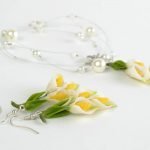








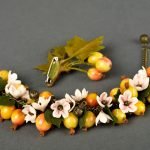

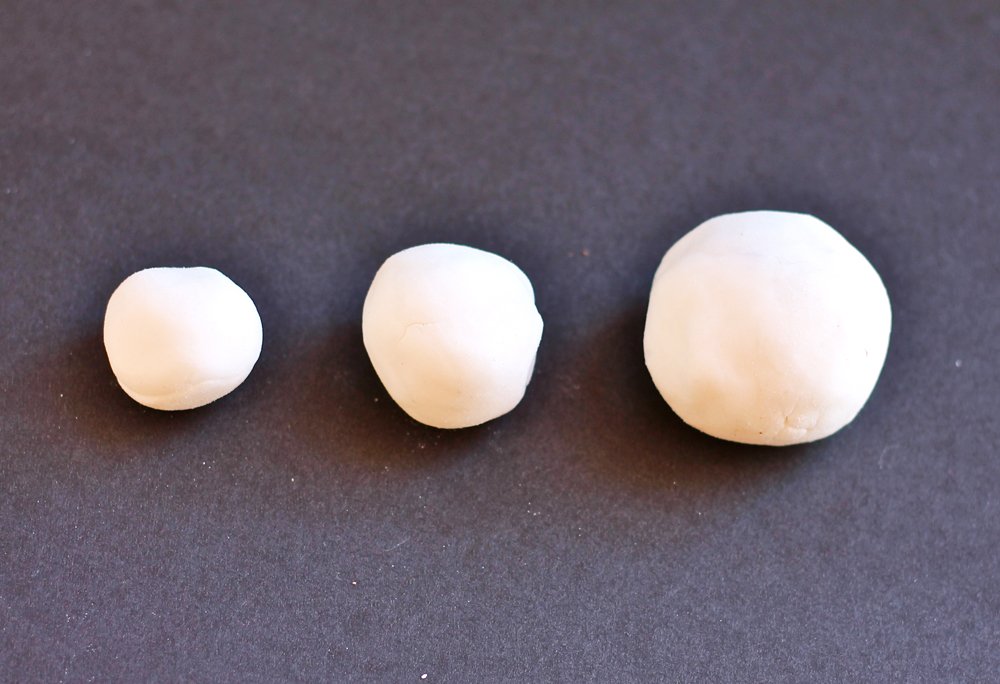


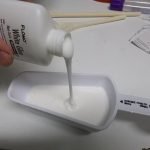
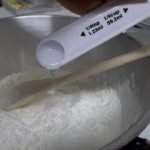







































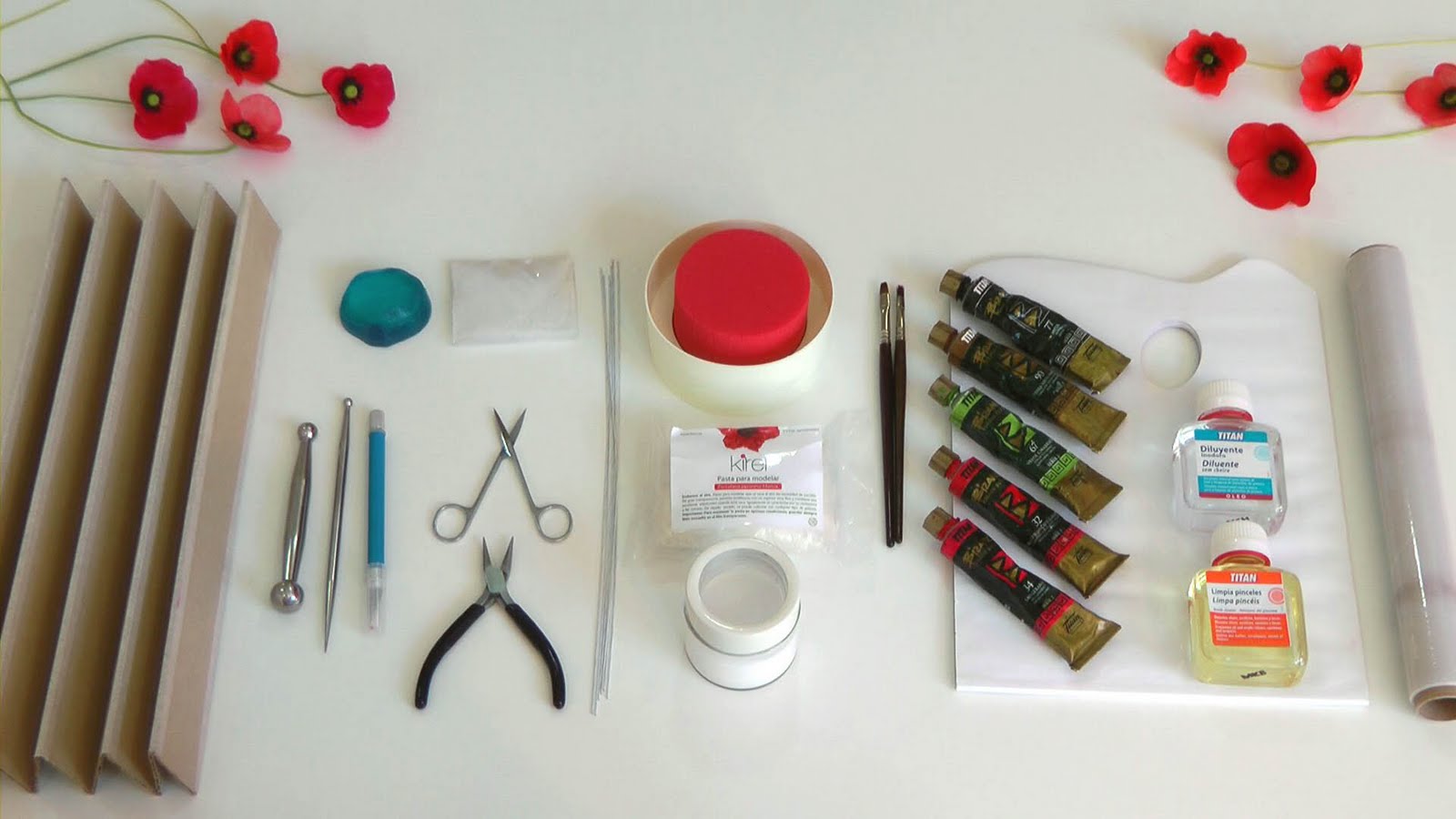














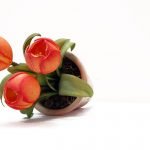













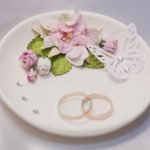


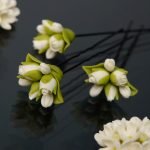











Diffuser for aroma oils by this method can be done?
You can make any vessel, it all depends on your imagination.